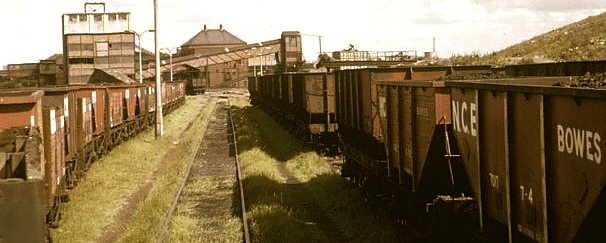Wardley Way Back When
The Wardley of today is a shadow of its former self. This area, once a vibrant pit village with its colliery, welfare ground, terraced houses and community spirit and including Follingsby and White Mere Pool, is now split in two by the misnamed Felling By-Pass to leave two bits of modern dormitory living. Some will pine for the times of old when the going was tough, others will be be delighted to be living in red bricked houses with all mod cons
The experts on the history of Wardley are Joan Hewitt and Gordon Stridiron and excellent books by them can be found in Gateshead main library and in Pelaw library. Some of Gordon's words, which includes some of Joan's words, are online here
So, you could go there and I could stop here... but I'd like to add my take with reference to things that are still around...like this corner shop which I've watched gradually morphing, over the last 30 years or so, into this lovely house
So, you could go there and I could stop here... but I'd like to add my take with reference to things that are still around...like this corner shop which I've watched gradually morphing, over the last 30 years or so, into this lovely house
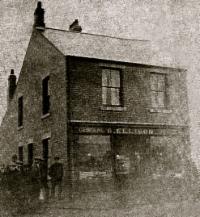
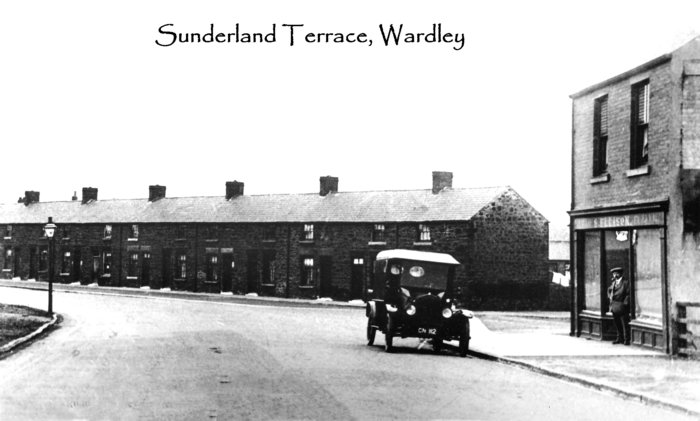
Here's the same shop
from Norman Dunn's website
seen from another angle and showing Sunderland Tce, long gone
from Norman Dunn's website
seen from another angle and showing Sunderland Tce, long gone
or this, Woodbine House seen here as Wardley Post Office, (later the British Legion club), before becoming this private house
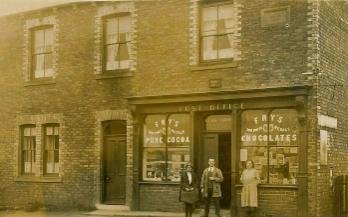
Here next is Thistley House Farm and Gallon's Field (Gallon was the last farmer, before demolition in the 1970's))

Next, a map to show the original Thistley House in relation to Wardley Colliery. This O.S Map of 1897 shows the Reservoirs, the Infant School and Methodist Chapel, the Wardley Colliery and the site of the moated Wardley Manor House (and also see this map) If you want to look at the area from the sky go here and click the blue squares
Left click the image to enlarge
The houses to the south of Thistley House are Reservoir Street and First Street, Second Street and Third Street. Further south still mention should be made of Wagonway Street and of course Quality Street (named before the chocs)
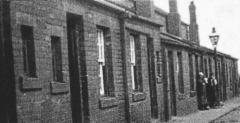
Wagonway Street
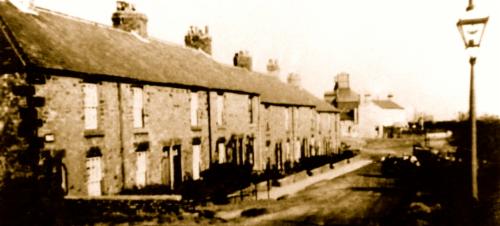
Quality Terrace, a cut above
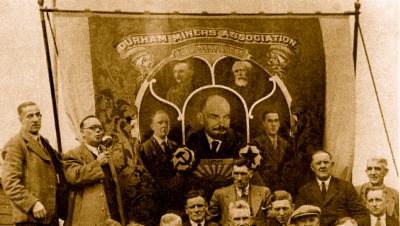
Here's miners' leader George Harvey, ironically standing on the extreme right* with his image on the extreme left* on the Follonsby Lodge Wardley banner. Lenin and the hammer and sickle hold the centre ground. The banner was destroyed by fire
(but it's been replaced)
*Left and right are always according to the carriers of the banner..not the viewer
(but it's been replaced)
*Left and right are always according to the carriers of the banner..not the viewer
Wardley Colliery opened 1855. Closed 1911, replaced by Follonsby. Wardley reopened in 1959 and merged with Follonsby Colliery, original Wardley Colliery shafts became known as Wardley No.2 and Wardley No. 3 shafts - Follonsby Colliery shaft known as Wardley No. 1, also linked with Usworth via underground loco road.
Wardley had running through its patch both of the area's two main wagonways viz Ouston and Pelaw Wagonway and Pontop and Jarrow Railway and what that means now is a legacy of walking/jogging/cycling/horse riding pathways much used and enjoyed by those now living in this dormitory area where, from a strip farming field of old, has emerged the now County Match standard Heworth Golf course administered by the Club which in 2012 celebrated its Centenary
And talking of leisure perhaps we should finish off with a couple of pints ..pull the first pint at Wardley Hall, now Wardley Club.
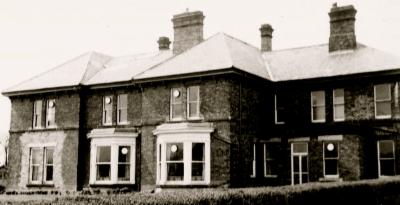
The Green, which had to be built as a replacement to the protected (but in danger of falling down) White Mare Pool Hotel. Pull the other one.
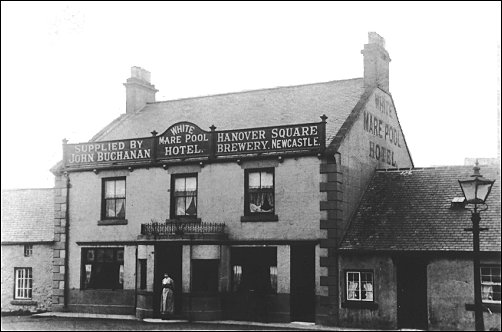
The original White Mare Pool Hotel with the reported dodgy founds on the Dixielander's extension...so why pull the main pub down? I love The Green...but some allege a disgraceful act of vandalism by Sir John Fitzgerald's builders
Jon Bratton 2014
